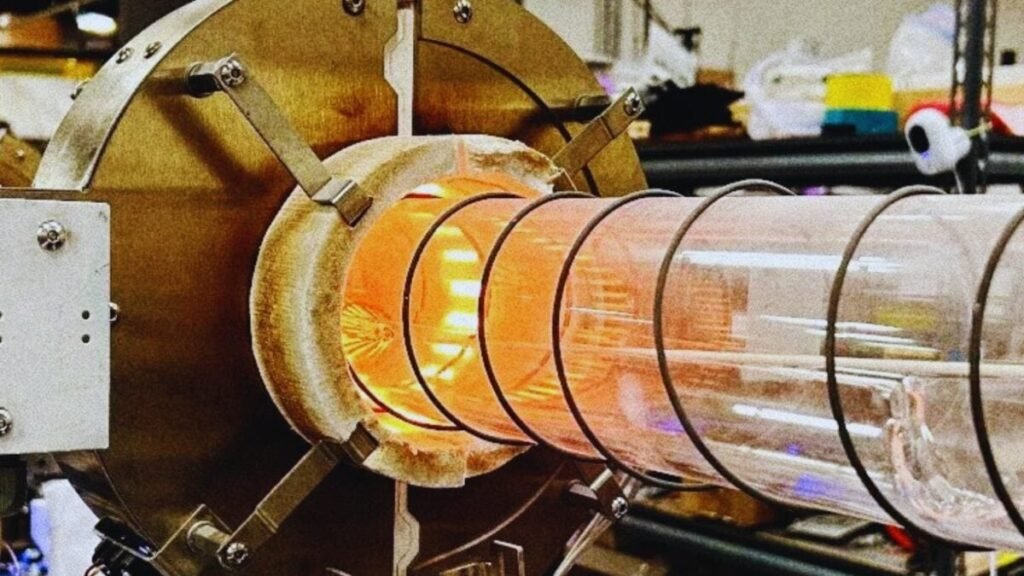Where once there was gold, now they seek the origin of the cosmos. Australia digs a laboratory to catch the invisible glow of dark matter.

More than a kilometer underground, where gold veins gave way to cables and sensors, a group of Australian scientists is seeking something infinitely more valuable: . It’s called dark matter, and if the experiment succeeds in detecting it, it could rewrite the history of modern physics.
The unseen universe

. The rest, according to physicists, is made up of two mysterious ingredients: dark matter (27%) and dark energy (68%). However, no one has been able to directly observe either of them. Their existence is only inferred from the gravitational effects they exert on galaxies, as if something invisible is holding them together.
“Between 75% and 80% of the universe is made of something we cannot see or touch,” explains Elisabetta Barberio, director of . “This experiment brings us closer to discovering what the majority of the cosmos is really made of.”
This quest is not just scientific: . If we understand what makes up the universe, perhaps we can understand ourselves.
A mine that listens to the cosmos
is located in the , an old gold mine in the Australian state of Victoria. At 1,025 meters underground, the rocky walls act as a shield: they filter cosmic radiation and allow the whispers of the universe to be heard with an impossible stillness on the surface.
seems like a capsule out of time. Constant temperature, filtered air, and a silence only interrupted by the electrical pulse of the detectors. At its core, a set of ultra-pure sodium iodide (NaI) crystals await in the dim light. If a dark matter particle —a hypothetical WIMP— collides with one of those atoms, it will generate a tiny flash, lasting only a few nanoseconds.
That almost imperceptible spark could be the first direct evidence that dark matter is not just an equation, but
The legacy of an Italian mystery

In 1998, at the Gran Sasso laboratory in Italy, a team detected a strange signal: a slight periodic increase in light in their crystals. They named it the DAMA/NaI experiment, and its result divided the scientific community.
Was it an environmental fluctuation or the footprint of dark matter? For decades, other laboratories in Spain, South Korea, and the United States tried to replicate it without conclusive success. Now, Australia offers a unique clue:
By comparing their data with those from the north, . If both signals match, the hypothesis will gain weight. If not, the mystery could become even deeper.
The machine that watches over itself
The Australian detector is so sensitive that even the heat of the human body could alter its results. That’s why it will operate almost autonomously.
Sensors will monitor the temperature, humidity, and even the vibrations of the mine. The scientists will observe the data from the University of Melbourne, hundreds of kilometers away.
Each crystal is immersed in a scintillating liquid —linear alkylbenzene (LAB)— which acts as a “noise” filter. If both shine at the same time, the event is discarded.
Before excavating a single meter, the team simulated the entire system with GEANT4, software from CERN and NASA that models particle interaction. The goal: to ensure that, when the time comes, no false flash confuses humanity.
The universe, or the possibility of being wrong

Not all physicists believe that dark matter exists. Canadian Rajendra P. Gupta, from the University of Ottawa, argues that the effects attributed to it could be explained by changes in the fundamental constants of the universe or by the aging of light in its cosmic journey.
If he is right, . But even that absence would be an answer.
As in any great scientific quest, silence also has value. Every non-detection refines the models, discards theories, and forces us to look from a different angle.
Awaiting the flash
In the coming years,
If that flash appears, it will confirm that the universe is woven with invisible matter that we can now begin to understand. And if not, there will remain the powerful image of humanity digging down to comprehend what happens up there.
Perhaps that is, at its core, the essence of science: searching for a spark of truth in the deepest darkness.






